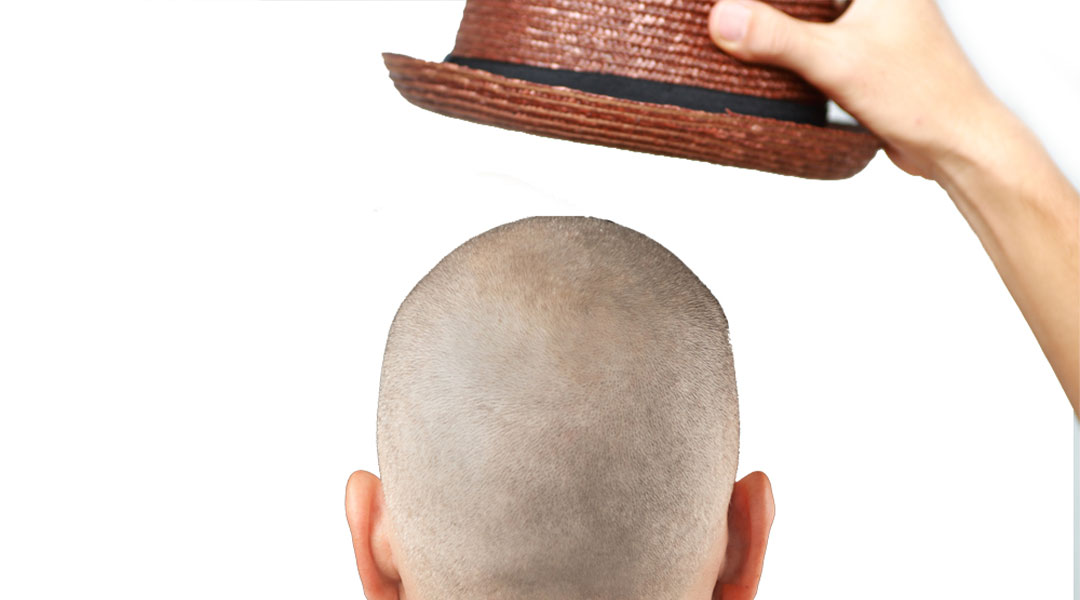For men who have already suffered hair loss and it’s too extreme for them to be able to undergo transplant surgery, scalp micropigmentation is a non-surgical way to fight the appearance of hair loss by leaving you with the “freshly shaven look”. It has quickly grown into one of the best solutions to get rid of the visibly signs of hair loss as a way to restore confidence.
However… you do need to take the time to consider your options and ask the right questions before booking yourself in for a scalp micropigmentation procedure. For example, it’s really important to understand that it doesn’t actually stop/slow your hair loss or to reverse it and result in renewed growth. Instead, it involves using needles to deposit small amounts of pigment into your scalp to create the appearance of hair follicles that have been recently shaven. The process itself is actually incredibly similar to having a tattoo done.
One of the most important and commonly asked questions is “how long does scalp micropigmentation last?” and it’s understandable why it’s asked so much. When you’re looking for a solution to hair loss, you want to look for something permanent right? Especially when it comes to spending your money as you want to ensure you get your money’s worth from the treatment. Unfortunately, it’s a tricky one to answer as it varies on an individual client and procedure basis, but there are some things that cause the pigmentation to fade much quicker.
How long does scalp micropigmentation last?
Scalp micropigmentation, a lot like microblading or permanent makeup, is a form of permanent cosmetic treatment. Depending on your lifestyle, it can affect the longevity of the results you receive from scalp micropigmentation which can result in the need to have a touch up treatment done after a few years.
There are a number of factors that cause the results of the procedure to fade at varying rates, but one of the biggest and worst contributors to this is sun exposure. The more that your scalp is exposed to the sun and it’s UV rays, the quicker the pigment will fade. Unfortunately, if you’re having this procedure done to mask the appearance of baldness then it’s a bit of an issue as your scalp is almost always exposed to the elements.
There are a number of other factors, like your immune system and the quality of the pigment used within the procedure which play a role in how long your scalp micropigmentation treatment will actually last. It’s also essential to ensure that you carry out the appropriate aftercare and take every effort to protect your scalp following the procedure to ensure that the results last as long as they possibly can.
It’s also common to see people touch up their scalp micropigmentation treatment after the original procedure has been carried out to alter the shape of their hairline or to try a new look, they aren’t only required because the results have faded.

Is scalp micropigmentation a permanent solution?
It is considered a permanent solution to fight the visible signs of hair loss, but it does come with the caveat that it is possible that it will fade over time. It’s a cosmetic treatment that is incredibly similar to a tattoo which is a permanent change to your skin, but the appearance will change gradually over time. It won’t ever go away completely (without undergoing a tattoo removal procedure), but to keep the “freshly shaven” look, you’ll need to make sure you keep it topped up.
It’s also advantageous to know that although it is a permanent solution to hair loss, you can still go back after a few years to make changes to the way you look and it does offer you some form of flexibility in the way you wear your hair.
Is scalp micropigmentation a hair transplant or a tattoo?
Technically, scalp micropigmentation can be considered as a tattoo but it definitely isn’t a hair transplant procedure as it doesn’t utilise hair follicles. It is performed in a very similar fashion to a traditional tattoo with an artist using a needle to insert the pigment into the skin and is sometimes referred to as a hair tattoo. But, there are some key differences that make it stand out from tattooing as a procedure.
For starters, a conventional tattoo uses a much thicker needle than one associated with scalp micropigmentation and the needles and machines used have been designed specifically for this procedure. It also uses a different technique to a traditional tattoo which is known as pointillism (the use of thousands of miniscule dots to create a shape or image). This is the perfect technique as it already mimics the natural appearance of hair follicles, so while it can be considered as a tattoo, it’s actually an art form in itself.
Will scalp micropigmentation fade?
In short, yes. Although it is a permanent treatment it is absolutely guaranteed to fade over time, however, how much it will fade will vary on a person to person basis and is entirely dependent on their lifestyle and immune system. Generally, it seems to be that most people require a touch up somewhere between the 3 to 7 years mark.
That doesn’t necessarily mean that you need to wait this long to get a touch up, you can go back whenever you want to change the colour or the style, you just need to bear in mind that it’s much more difficult to get rid of pigment in the skin than it is to add more.

